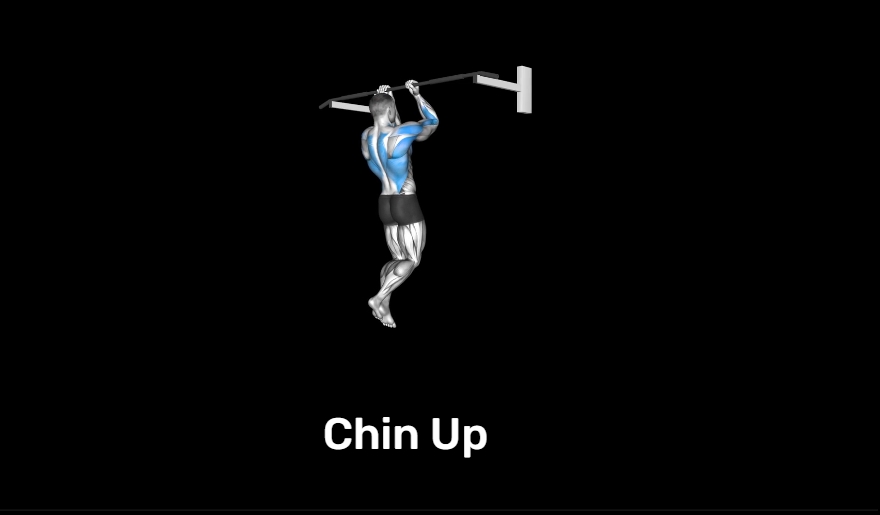Hey! I get it – staring up at that pull-up bar can feel downright intimidating sometimes. Maybe you’re just starting out, maybe you’re nursing an old shoulder tweak, or maybe your home gym setup (like mine used to be!) is more “dumbbells in the corner” than full power rack. Whatever your reason for seeking a chin-up alternative, you’re in the right place. I’ve been there myself, feeling frustrated when the classic pull-up just wasn’t happening. The great news is this: fantastic alternatives like the Lat Pulldown, Resistance Band Assisted Pull-Ups, Inverted Rows, Dumbbell Rows, and various targeted bicep curls exist, and they powerfully hit all the key players – your lats (those awesome wing muscles!), your entire back, your biceps, and your shoulders. Let’s dive into my favorites that I use daily with clients and have relied on myself.
1. Lat Pulldown
- Equipment: Cable Machine with Lat Pulldown Bar (Wide Grip or Neutral Grip attachments are best). Honestly, this machine is a back-saver!
- The Primary Muscle Group: This is your Latissimus Dorsi powerhouse move. It also smokes your upper back (rhomboids, traps) and gives the biceps a solid secondary workout. Think of it as the seated version of pulling yourself up.

- How to Do the Lat Pulldown (Get It Right!):
- Set Up: Adjust the knee pad so it firmly holds your thighs down. Grab the bar with a wide, overhand grip (palms facing away). Sit tall, chest up, slight arch in your lower back. I see so many people hunching here – fight that urge!
- The Pull: Focus on pulling your elbows down and back towards your hips. Imagine squeezing a pencil between your shoulder blades. Pull the bar down smoothly until it touches your upper chest. Feel those lats ignite!
- The Controlled Return: This is crucial! Resist the weight as you slowly let the bar rise back up. Keep tension on those lats – don’t just let it yank your arms up. Go for a full stretch at the top without losing your seated posture.
- Rep It Out: Aim for controlled reps where the squeeze at the bottom and the stretch at the top are what you feel most. Forget about just moving weight.
2. Bent Over Row
- Equipment: Barbell, Dumbbells, or even a Landmine setup. Versatility is key! I often start clients with dumbbells for better range of motion control.
- The Primary Muscle Group: This is a complete back annihilator – lats, rhomboids, traps, rear delts. It also demands core stability and gives the biceps a serious role. It builds that thick, strong back foundation crucial for eventually nailing pull-ups.
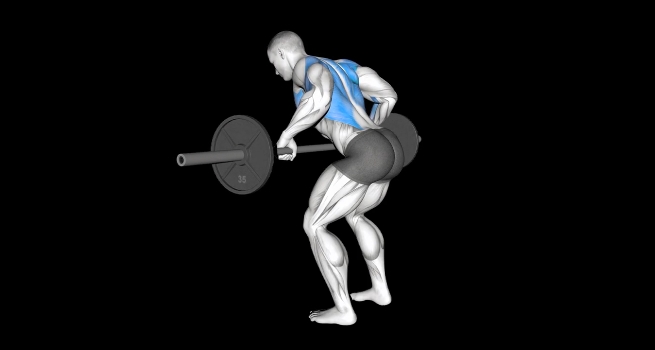
- How to Do It (Protect That Back!):
- Stance: Stand with feet shoulder-width apart, knees slightly bent. Hinge at your hips, pushing your glutes back. Keep your back FLAT – neutral spine is non-negotiable here. Let your arms hang straight down, holding the weight(s). Imagine you’re about to start a lawnmower – that torso angle!
- The Row: Brace your core like you’re about to be punched in the gut. Pull the weight(s) straight up towards your lower chest/upper abdomen, leading with your ELBOWS. Squeeze those shoulder blades together hard at the top.
- The Lower: Control the weight back down to the starting position. Feel the stretch in your lats. Maintain that flat back throughout – no rounding!
3. Dumbbell Row
- Equipment: Dumbbell, Weight Bench (for support). Perfect for home gyms or focusing on one side at a time.
- The Primary Muscle Group: Targets the lats and mid-back intensely, while also hammering core stability (fighting rotation!) and working the biceps. Fantastic for fixing imbalances. I use this chin up alternative constantly with clients who have one side stronger than the other.
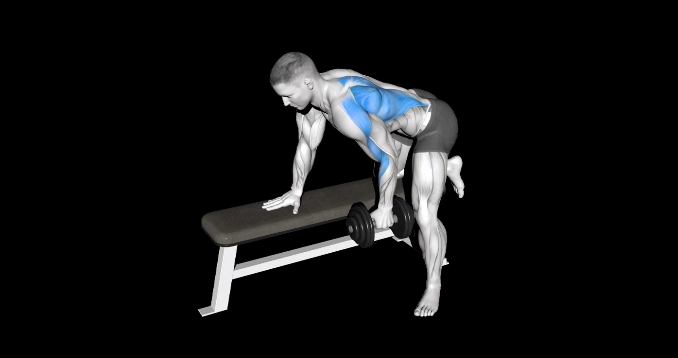
- How to Do It (The Kettlebell Trick):
- Set Up: Place one knee and the same-side hand firmly on a bench. Your other foot is planted on the floor. Keep your spine neutral, parallel to the floor. Hold a dumbbell in your free hand, arm extended straight down. Pro Tip: Resting your forehead on the bench can help maintain spine alignment if needed.
- The Row: Pull the dumbbell straight up towards your hip, driving your elbow high towards the ceiling. Focus on using your BACK muscles, not just your arm. Squeeze your shoulder blade at the top. Think “elbow to sky”.
- The Lower: Slowly lower the dumbbell back to the full stretch position. Control is king here. Repeat all reps on one side before switching.
4. Incline Dumbbell Curl
- Equipment: Adjustable Bench (set to a 45-60 degree incline), Dumbbells.
- The Primary Muscle Group: This is a bicep peak specialist. The incline angle places your arms behind your torso, putting an incredible stretch on the long head of the biceps at the bottom of each rep. Secondary work hits the brachialis and forearms. This stretch is pure gold for growth – I feel it every single time.
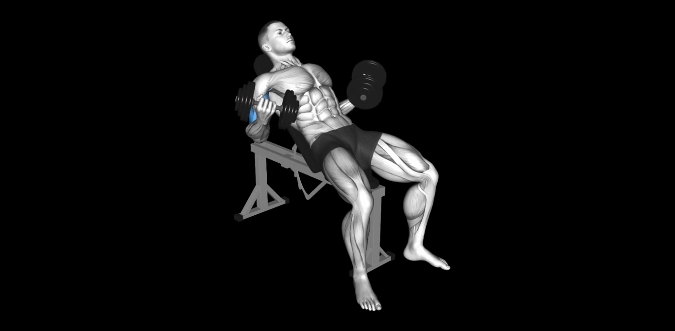
- How to Do Incline Dumbbell Curls (Maximize the Stretch!):
- Set Up: Sit firmly back on the inclined bench, chest up, shoulders down. Let your arms hang straight down by your sides, palms facing forward (or slightly inward for comfort), holding the dumbbells. Feel that deep stretch in your biceps already? Good.
- The Curl: Keeping your upper arms glued to your sides and elbows pointing down towards the floor, curl the dumbbells up towards your shoulders. Focus purely on bending at the elbow – resist any urge to swing or use your shoulders. Squeeze the biceps HARD at the top.
- The Controlled Lower: This is where the magic happens. Slowly lower the weights back down, fighting gravity all the way, until your arms are fully extended and you feel that deep stretch in the biceps again. Don’t rush this phase! I tell my clients: “The stretch is the stimulus here.”
- Rep It Out: Maintain strict form. If you start swinging, the weight is too heavy. Focus on that peak contraction and deep stretch.
5. Zottman Preacher Curl
- Equipment: Preacher Curl Bench (or Scott Bench), Dumbbells. A regular bench can work in a pinch by leaning over the backrest, but a preacher bench is ideal for isolation.
- The Primary Muscle Group: A bicep and forearm powerhouse. The preacher bench locks your upper arms, forcing pure bicep isolation on the concentric (lifting) phase. Rotating your palms down at the top turns the eccentric (lowering) phase into a brutal forearm (brachioradialis and brachialis) builder. This one-two punch is fantastic for overall arm development and grip strength – crucial for pull-ups.
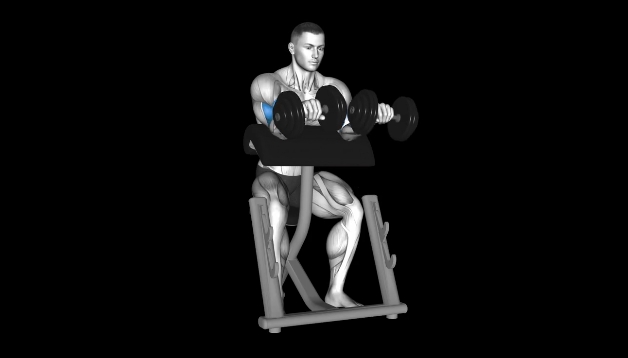
- How to Do Zottman Preacher Curls (Master the Rotation!):
- Set Up: Sit at the preacher bench, chest pressed against the pad, armpits just over the top. Grab dumbbells with an underhand grip (palms up). Let your arms extend fully without hyperextending your elbows. Get comfortable; you shouldn’t be straining your shoulders here.
- The Curl Up: Curl the dumbbells up towards your shoulders, focusing solely on contracting your biceps. Keep your upper arms firmly planted on the pad. Squeeze hard at the top.
- The Rotation & Lower: At the top position, rotate your wrists so your palms face DOWN (pronate). Now, slowly lower the dumbbells back to the starting position with your palms facing down. Feel your forearms screaming? That’s the Zottman effect! Rotate back to palms up at the bottom.
- Rep It Out: Smooth rotation is key. Control the lowering phase – that’s where the forearm magic happens. Don’t drop the weights!
6. Dumbbell Reverse Curl
- Equipment: Dumbbells. (Can also be done with a barbell or EZ-bar, but dumbbells allow for natural wrist alignment).
- The Primary Muscle Group: Targets the brachialis (underneath the biceps) and brachioradialis (forearm muscle) intensely. The overhand (pronated) grip minimizes bicep involvement, forcing these often-neglected muscles to do the heavy lifting. Essential for thicker arms and stronger pulling.
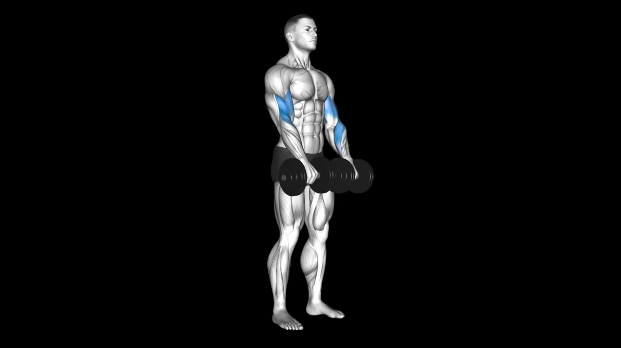
- How to Do Dumbbell Reverse Curls (Grip and Rip!):
- Stance: Stand tall (or sit), feet shoulder-width apart, core braced. Hold dumbbells at your sides with an overhand grip (knuckles facing forward, palms down). Keep your elbows tucked close to your body. No cheating by letting your elbows flare!
- The Curl: Keeping your upper arms stationary, curl the dumbbells up towards your shoulders. Focus on driving with your forearms. The movement is shorter than a regular curl – you’ll likely only reach chin level. Squeeze your forearms at the top. Feel that deep burn on the outside of your upper arms? That’s the brachialis working.
- The Lower: Slowly lower the dumbbells back to the starting position, maintaining control and that overhand grip. Resist the temptation to let the weights swing.
- Rep It Out: Keep your wrists straight and rigid throughout the movement. Expect a serious forearm pump!
7. EZ Bar Reverse Curl
- Equipment: EZ-Curl Bar, Weight Plates. The EZ-bar’s angled grips are often easier on the wrists than a straight bar for reverse curls.
- The Primary Muscle Group: Hammer the brachialis and brachioradialis, similar to the dumbbell version, but allows for heavier loading due to the barbell stability. Also hits the forearms hard.
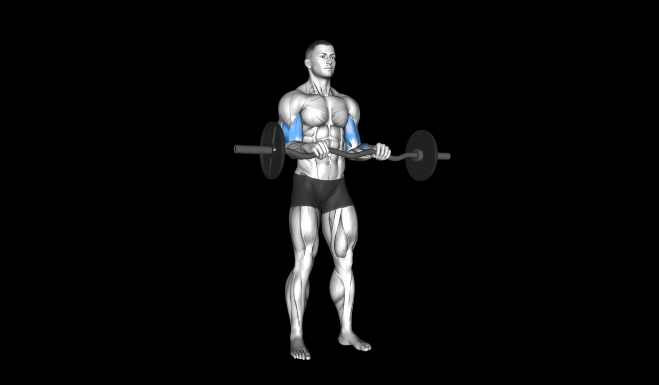
- How to Do EZ Bar Reverse Curls (Wrist-Friendly Power):
- Stance: Stand tall, feet shoulder-width apart, core tight. Grip the EZ-bar with an overhand (pronated) grip on the outer, angled handles (palms facing down). Let the bar hang in front of your thighs, arms extended.
- The Curl: Keeping your elbows pinned to your sides and upper arms still, curl the bar up towards your chin/shoulders. Focus the effort entirely on your forearms and the meaty part of your upper arm underneath the bicep. Squeeze hard at the top.
- The Lower: Slowly lower the bar back down to the starting position with complete control. Maintain the overhand grip and rigid wrists.
- Rep It Out: The EZ-bar lets you go a bit heavier while being kinder to your wrists. Still, prioritize form over weight. Pro Tip: Imagine you’re trying to bend the bar upwards with your pinkies – helps engage the forearms more.
8. Hammer Curl
- Equipment: Dumbbells.
- The Primary Muscle Group: Primarily targets the brachialis and brachioradialis using a neutral grip (palms facing each other). Also works the biceps brachii (especially the long head) and forearms. Builds thickness and strength from the side view of the arm. A staple chin up alternative moves in my own and my clients’ routines for balanced arm development.
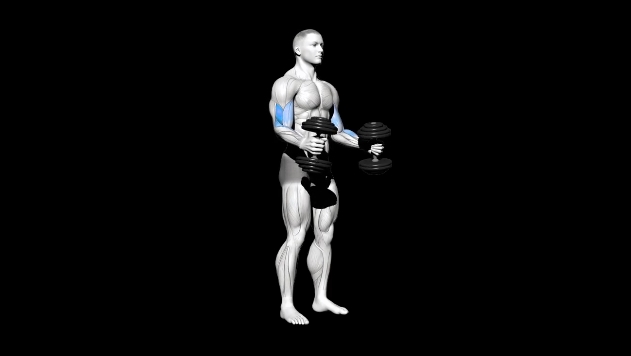
- How to Do Hammer Curls (Neutral Grip Strength):
- Stance: Stand (or sit) tall, core engaged. Hold dumbbells at your sides with a neutral grip (palms facing your body). Elbows should be tucked in close.
- The Curl: Keeping your upper arms stationary and elbows pointing down, curl the dumbbells up towards your shoulders. The dumbbells move straight up the sides of your body. Squeeze your upper arms hard at the top – imagine crushing something between your bicep and forearm. Feel that deep tension?
- The Lower: Slowly lower the dumbbells back to the starting position, resisting gravity. Maintain the neutral grip throughout.
- Rep It Out: Focus on the contraction in the “meat” of your upper arm. Avoid swinging your body.
9. Incline Hammer Curl
- Equipment: Adjustable Bench (set to 45-60 degrees incline), Dumbbells.
- The Primary Muscle Group: Combines the brachialis/brachioradialis focus of the hammer curl with the extreme stretch of the incline curl. The incline position stretches the brachialis and long head of the biceps more intensely than standing. One of my favorite chin up alternatives for a serious arm pump and growth stimulus.
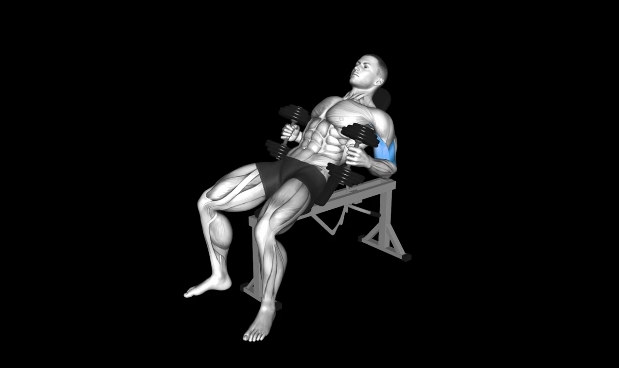
- How to Do Incline Hammer Curls (Stretch & Squeeze):
- Set Up: Sit back firmly on the inclined bench. Hold dumbbells with a neutral grip (palms facing each other). Let your arms hang straight down, fully extended. Feel that immediate stretch deep in your upper arms?
- The Curl: Keeping your upper arms fixed relative to your torso (they’ll naturally angle slightly back due to the bench), curl the dumbbells up towards your shoulders. Focus on driving with your elbows. Squeeze your brachialis and biceps hard at the top.
- The Controlled Lower: Slowly lower the dumbbells back down, fighting the weight all the way, until you feel that deep stretch again in your brachialis and biceps. The stretch at the bottom is non-negotiable for maximum effect.
- Rep It Out: Maintain the neutral grip. Control the negative – don’t just drop into the stretch. This one burns so good!
10. Dumbbell Concentration Curl
- Equipment: Dumbbell, Bench (to sit on).
- The Primary Muscle Group: The ultimate bicep peak isolator. By bracing your elbow against your inner thigh and sitting down, you eliminate almost all body english and secondary muscle involvement, forcing pure, brutal focus on the biceps brachii (especially the short head peak). Perfect for finishing off the biceps or focusing on a stubborn peak.
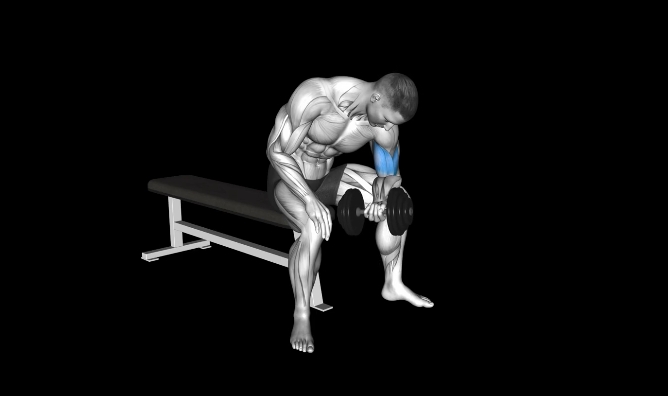
- How to Do Dumbbell Concentration Curls (Pure Isolation):
- Set Up: Sit on the end of a bench, feet flat on the floor wider than shoulder-width. Hold one dumbbell in your hand. Lean forward slightly and place the back of your upper arm (just above the elbow) firmly against the inside of your corresponding thigh. Let your arm hang straight down, palm facing inwards. Brace your other hand on your other knee for stability. Get locked in!
- The Curl: Keeping your upper arm firmly pressed against your thigh and your torso completely still, curl the dumbbell up towards your shoulder. Focus ONLY on contracting your bicep. Squeeze and hold that peak contraction for a full second at the top. Feel that deep burn right in the belly of the muscle?
- The Lower: Slowly, with absolute control, lower the dumbbell back to the starting position, getting a full stretch in the bicep. Zero momentum allowed here.
- Rep It Out: Perform all reps on one arm before switching. Focus on the mind-muscle connection above all else. This is about quality, not weight.
11. Cross Body Hammer Curl
- Equipment: Dumbbells.
- The Primary Muscle Group: A dynamic chin up alternative primarily targeting the brachialis and brachioradialis, but also hitting the biceps brachii (especially the short head) from a unique angle. The crossing motion adds an adduction component, increasing tension through the mid-range. Great for adding variety and hitting the arms slightly differently.
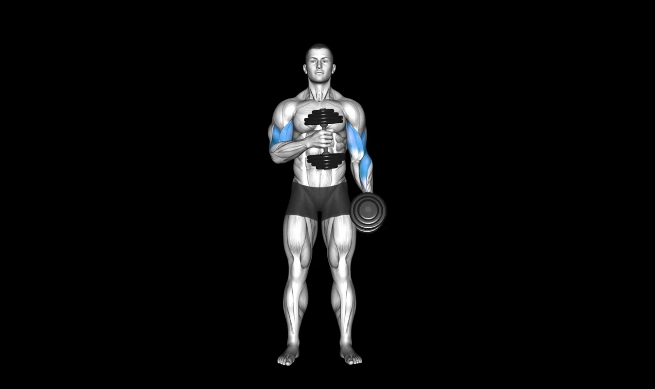
- How to Do Cross Body Hammer Curls (The Diagonal Pull):
- Stance: Stand (or sit) tall, core tight. Hold dumbbells at your sides with a neutral grip (palms facing your body).
- The Curl: Keeping your upper arm relatively still (a small amount of natural forward movement is ok), curl one dumbbell up and across your body towards your opposite shoulder. Imagine aiming for your collarbone. Squeeze your upper arm hard at the top of the movement. Feel the tension shift?
- The Lower: Slowly lower that dumbbell back to the starting position with control. Repeat the movement with the other dumbbell, bringing it across towards your opposite shoulder. Alternate arms with each rep.
- Rep It Out: Keep the movement controlled. Don’t let it become a swing. Focus on the contraction in the brachialis as you bring the weight across your body. Pro Tip: Slightly lean away from the working arm as you curl across to increase tension.
You absolutely DO NOT need a pull-up bar right now to build the strength for one. Consistently combine powerful back builders (Pulldowns, Rows) with targeted arm work (especially brachialis-focused moves like Hammer/Reverse Curls). Focus on form, feel the target muscles working hard, and progressively challenge yourself. That first unassisted chin-up? It’s coming. Grab those dumbbells or hit the cable machine – your stronger back and arms start today! Which chin up alternative will you conquer first?
Welcome! I’m Jordan Mitchell, the dedicated editor at Leadman Fitness, where we specialize in manufacturing high-quality bumper plates, barbells, weight machines, kettlebells, and dumbbells. With a passion for fitness and a keen eye for detail, I ensure that our product information is clear, accurate, and engaging for our customers. My role involves collaborating closely with our design and production teams to highlight the innovative features and superior craftsmanship that set Leadman Fitness apart in the industry. Whether you’re a professional athlete or a fitness enthusiast, I’m here to provide you with the information you need to achieve your training goals with our top-of-the-line equipment.
